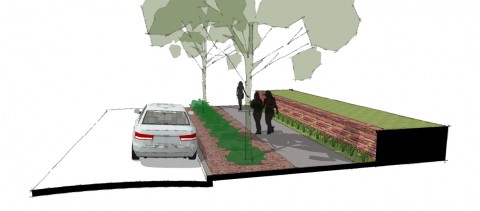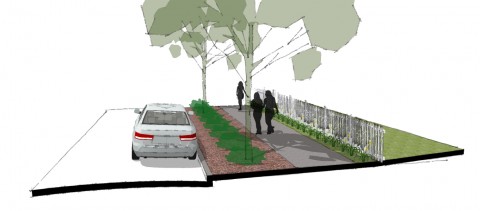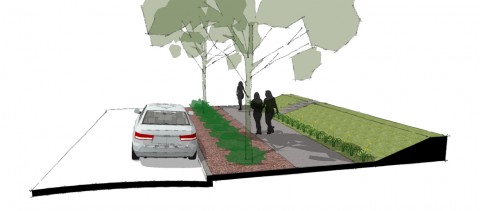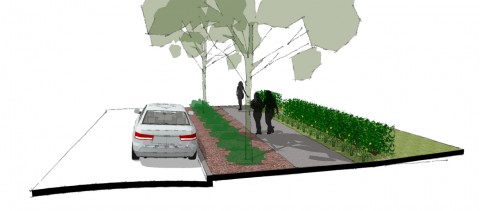Let me start by saying that I am a huge advocate for new urbanism, neo-traditional neighborhoods and form-based codes, as you may have predicted from prior posts. However, one thing that has bothered me is the often missed-opportunity for traditional homes to be set back from the street 15-ft to 20-ft. Fellow Urbanists, please bear with me for a moment on this.
The traditional neighborhood model (note that I said “traditional” rather than “conventional”) that most architects and planners across the country use is focused on locating the buildings as close to the sidewalk and street as reasonably possible. While I do agree with the philosophies and the sense of community it assists in creating, I feel that occasionally, greater flexibility in setbacks can create an even more dynamic place.
A couple of years ago, during form-based code training in Kansas City, course instructor Scott Polikov had the same concern. My mind started to wander when he was closing his presentation with some thoughts and one of them being considering coding for greater setbacks.
Typically, a neo-traditional neighborhood provides a range from 2-ft to 10-ft of front setback for homes from the right-of-way (typically the edge of sidewalk). One reason that this is done is to create the feeling of enclosure along the sidewalk.
The building walls though are not necessarily the only way that we can create this enclosure. The following sketches illustrate options to maintain the enclosure. Note that on all of these, there is still a significant tree lawn space (5-ft at a minimum, prefer 8-ft in this setting, especially when some sort of turf is used) and that something vertical is still needed for the enclosure. Also note that in all instances, some sort of pedestrian penetration is necessary with a gate, staircase, etc.
Alternative 1: Low free-standing or retaining wall.

A free-standing wall could be used, but if used, it should remain low (36” or lower). In a neighborhood in southwest United States, this is common creating the front courtyard. The wall provides for a quaint usable front yard space that can feel secure for kids to play, etc. A low retaining wall is also common. In Colorado Springs, many of the pre-WWII homes have a retaining wall in the front yard. A retaining wall serves dual purposes, for separation and to create a flatter front yard space. The retaining wall also creates a great place for sitting, while creating a seat wall along the sidewalk.
Alternative 2: Low fence with Gate (preferably with some openness and not completely opaque)

A low fence can be a pleasant feature that can again provide the extra level of security desired by young families. The idea of the white picket fence in the front yard is easily and often romanticized.
Alternative 3: Enclosure with Grading (3:1 slope with staircase)

This is another very common feature found in pre-WWII neighborhoods. I would guess that 80% of the people of the United States recall seeing this application in an older neighborhood. However, it rarely is used for new neighborhoods. Instead of having a fence or other vertical element, why not just use the earthwork to your advantage. This is also helpful in providing walk-out basement homes by increasing the elevation on the upper floor, the alley side of the house could more easily have a walk-out basement. Be cautious planting this with turfgrass, however.
Alternative 4: Hedge with or without Fence

A hedge could obtain the necessary feeling of enclosure as well. Many species of plant material can pull this off tremendously. Careful plant selection is crucial if this is chosen method. I have seen this attempted in Colorado Springs with Blue Mist Spiraea where it works well for a year or two, but after full growth is attained for a Blue Mist, the hedge could easily overwhelm the sidewalk. This can have an adverse effect and require shrub rejuvenation every 2-3 years.







